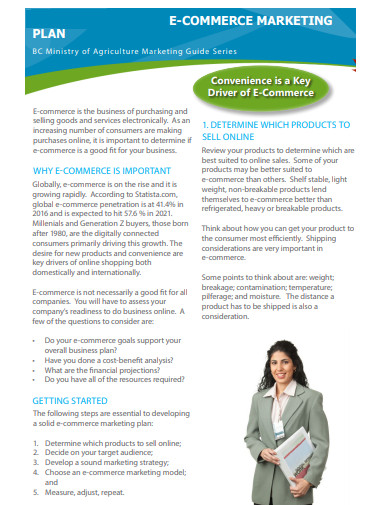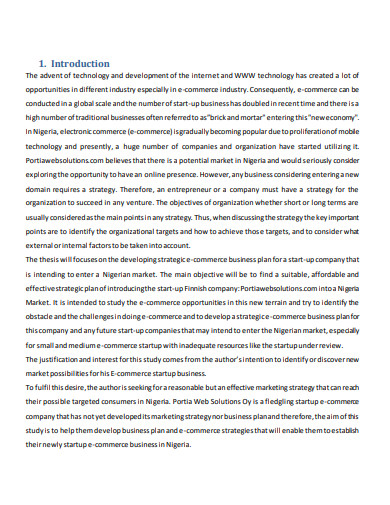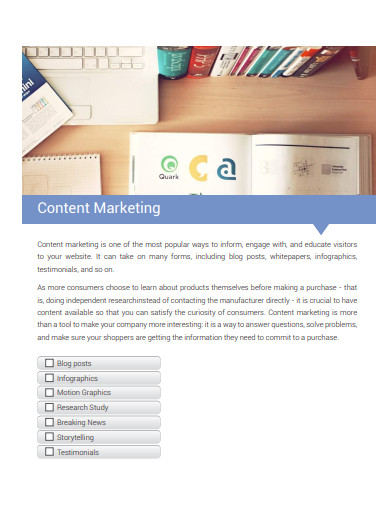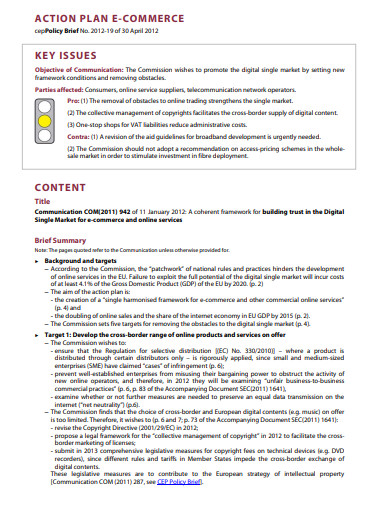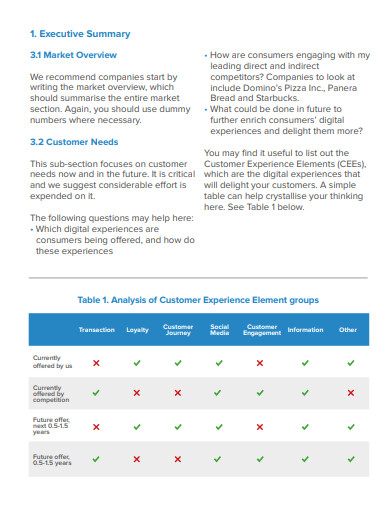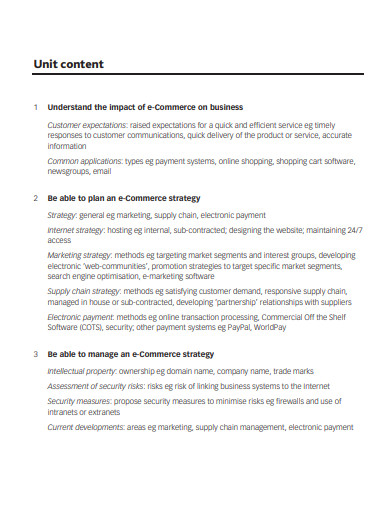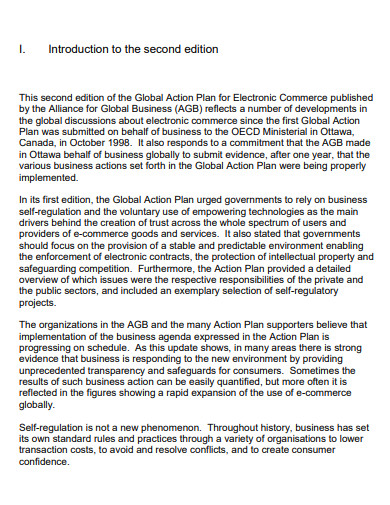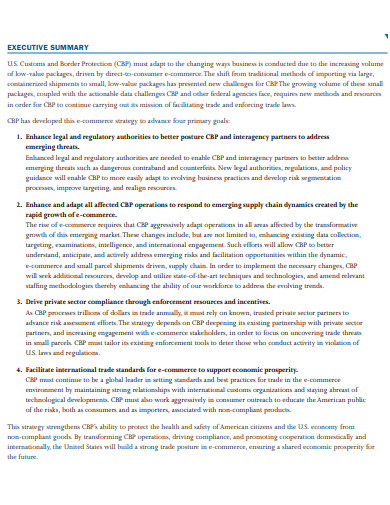If you have an online store that sells items or services, you might be interested in some tips on how to improve your eCommerce approach and reach more clients. A strong eCommerce marketing strategy summarizes how your store intends to achieve its objectives and increase its market position. The type of eCommerce strategy you use will be determined by the objectives you want to achieve. We’ll concentrate on how to generate more leads and turn them into clients in this situation.
10+ E-Commerce Strategy Plan Samples
Ecommerce is a type of business that sells things over the internet. It’s the same as an internet store. These products can be tangible items such as shoes, cosmetics, literature, groceries, and so on. Online classes, training programs, and memberships, ready-to-eat meal subscriptions, fashion rental, and so on are examples. You’re a direct-to-consumer business if you only sell your own products through a website. Your business strategy is hybrid if you have both a brick-and-mortar and an online store. Ecommerce shops can also sell things from other brands that they do not manufacture.
1. E-Commerce Strategy Plan
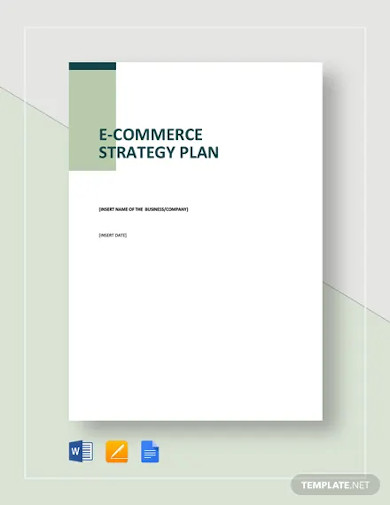
2. E-Commerce Project Strategy Plan
3. E-Commerce Marketing Strategy Plan
4. Strategic E-Commerce Development Plan
5. Sample E-Commerce Marketing Strategy Plan
6. E-Commerce Strategy Action Plan
7. Integrated E-Commerce Strategy Plan
8. Sample E-Commerce Strategy Plan
9. E-Commerce Strategy Business Plan
10. Sample E-Commerce Strategy Action Plan
11. E-Commerce Strategy Plan Example
E-Commerce Strategy Plan and Tips
- Establish e-commerce goals – Establishing a set of goals for your e-commerce strategy is the first step. With clear goals in place, you’ll be able to measure the performance of your online store and the efforts of your e-commerce campaign, whether your goal is to attract a certain number of customers or create a given amount of income within a specific time period. Make careful to compare your objectives to industry norms and establish measurable benchmarks. Setting goals and key results is a smart place to start. The aim is described by objectives, while the steps to get there are described by key results.
- Develop buyer personas – Knowing who your target market is will be crucial to your e-commerce strategy’s success. Take some time to create buyer personas to help you determine your target demographic. Buyer personas are fictional representations of your “ideal” consumer that you might employ to target potential customers more effectively. They’re fictitious characters created to assist you to cultivate actual customers and focusing your efforts. They also reflect the ambitions and ideals of your firm.
- Identify unique value proposition – Customers that shop online tends to do a lot of research before making a purchase. This implies that customers will most likely compare your items or services to those of your competitors. Determine and communicate your brand’s distinctive value offer to potential customers. Every e-commerce buyer wonders, “Why should I buy from you instead of your competitors?” The value proposition answers this issue. ”
- Create effective product or service description – On your e-commerce page, include descriptive descriptions of the products or services you’re selling. These descriptions should emphasize the benefits and characteristics of your products/services while still being simple to read for buyers. Provide as much information as possible to your customers.
- Optimize checkout process – Make your checkout procedure as easy as possible for your customers. A badly designed checkout procedure can result in a high rate of cart abandonment. Make certain it’s simple to use! Offer a social media auto-sign-in option for a more easy experience, and don’t make users fill out many pages of forms. Allow customers to see what’s in their shopping basket and make last-minute alterations with ease.
- Run retargeting and remarketing campaigns – To recapture their attention and remind them of their interest, place retargeting ads on other websites or social media platforms to highlight the products or services that they were previously interested in.
- Establish trust – In order to run an e-commerce store, you must have complete trust in your customers. After all, clients are providing you with sensitive information, so make sure to encrypt any data transported to and from your website using the HTTPS protocol.
FAQs
What is e-commerce marketing?
Any marketing effort you make to promote your online business and drive sales is referred to as e-commerce marketing. It applies to both acquiring new customers and convincing existing customers to shop again (customer retention).
Why do you have to increase e-commerce search usability?
Customers who know exactly what they want to get the information they need as soon as possible. Designing a high-performing search experience is important for your users because if they can’t locate what they want, they’ll go to another business to buy it.
You’ll need to create an efficient e-commerce marketing plan if you want your e-commerce store to be successful. You shouldn’t expect to make money just because you have an online store. You’ll be on your way to having a profitable and authoritative online store that draws clients if you follow these ten e-commerce tips.
Related Posts
FREE 7+ Fashion Business Plan Samples in PDF
FREE 10+ Sprint Planning Samples In MS Word | Google Docs | PDF
FREE 10+ Wedding Planning Samples in MS Word | Apple Pages | Powerpoint | PDF
FREE 9+ Monthly Study Planner Samples in PSD | Illustrator | InDesign | PDF
FREE 9+ Sample Curriculum Planning Templates in PDF | MS Word
FREE 10+ Teacher Development Plan Samples in MS Word | Google Docs | Apple Pages | PDF
FREE 10+ Basketball Practice Plan Samples in PDF
FREE 12+ School Business Plan Samples in PDF | MS Word | Apple Pages | Google Docs
FREE 7+ Client Strategic Plan Samples in PDF | MS Word
FREE 11+ Trucking Business Plan Templates in PDF | MS Word | Google Docs | Pages
FREE 7+ Small Hotel Business Plan Samples PDF | MS Word | Apple Pages | Google Docs
FREE 14+ Bakery Business Plans in MS Word | PDF | Google Docs | Pages
FREE 4+ Yearly Lesson Plan Samples in PDF
FREE 50+ Strategic Planning Samples in Google Docs | Pages | PDF | MS Word
FREE 10+ Construction Project Plan Samples in MS Word | Google Docs | Apple Pages | PDF


